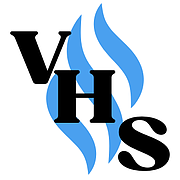Securing Your Stance in Cloud Environments: Best Practices for Robust Security
Ensuring a secure stance in cloud environments is paramount for organizations leveraging the benefits of cloud computing. Implementing robust security measures safeguards sensitive data and mitigates potential threats. Here are key best practices to establish a secure stance in cloud environments:
1. Identity and Access Management (IAM):
– Principle of Least Privilege: Assign minimal permissions necessary for tasks to reduce the risk of unauthorized access.
– Multi-Factor Authentication (MFA): Enforce MFA to add an additional layer of security beyond passwords.
2. Data Encryption:
– In-Transit Encryption: Use secure communication protocols (SSL/TLS) to encrypt data during transit.
– At-Rest Encryption: Encrypt stored data to protect against unauthorized access.
3. Network Security:
– Virtual Private Clouds (VPCs): Leverage VPCs to isolate and secure network traffic within the cloud environment.
– Firewalls and Security Groups: Implement network security controls to filter and monitor incoming and outgoing traffic.
4. Logging and Monitoring:
– Comprehensive Logging: Enable detailed logging of activities and events for auditing and detection purposes.
– Real-Time Monitoring: Implement tools for continuous monitoring of network and application activities.
5. Regular Security Audits and Assessments:
– Penetration Testing: Conduct regular penetration tests to identify and rectify vulnerabilities.
– Security Audits: Perform periodic security audits to ensure compliance with security policies.
6. Incident Response and Disaster Recovery:
– Incident Response Plan: Develop a well-defined incident response plan to address security incidents promptly.
– Backup and Recovery: Regularly backup critical data and establish a robust disaster recovery strategy.
7. Vendor Security Assurance:
– Due Diligence: Conduct thorough security assessments of cloud service providers before engagement.
– Service Level Agreements (SLAs): Clearly define security responsibilities in SLAs with cloud providers.
8. Container Security:
– Container Orchestration Security: Secure container orchestration platforms like Kubernetes.
– Image Scanning: Regularly scan container images for vulnerabilities before deployment.
9. Compliance and Regulatory Measures:
– Understand Regulations: Stay informed about industry-specific regulations and compliance requirements.
– Regular Compliance Audits: Conduct regular audits to ensure adherence to compliance standards.
10. Employee Training and Awareness:
– Security Training: Provide comprehensive security training to employees to recognize and respond to potential threats.
– Phishing Awareness: Educate employees about phishing risks and tactics.
11. Automation of Security Processes:
– Automated Security Checks: Implement automation for routine security checks and updates.
– Orchestration of Responses: Automate incident response processes to enhance efficiency.
12. Cloud-native Security Services:
– Cloud Security Posture Management (CSPM): Utilize CSPM tools to monitor and manage security configurations.
– Cloud Access Security Brokers (CASB): Employ CASB solutions for data protection and access control.
13. Stay Informed About Emerging Threats:
– Threat Intelligence: Regularly update threat intelligence to stay ahead of evolving cyber threats.
– Security Community Engagement: Participate in security communities for shared insights and best practices.
By adhering to these best practices, organizations can fortify their security posture in cloud environments, ensuring a resilient defense against potential threats and vulnerabilities.




Thank you for your sharing. I am worried that I lack creative ideas. It is your article that makes me full of hope. Thank you. But, I have a question, can you help me?